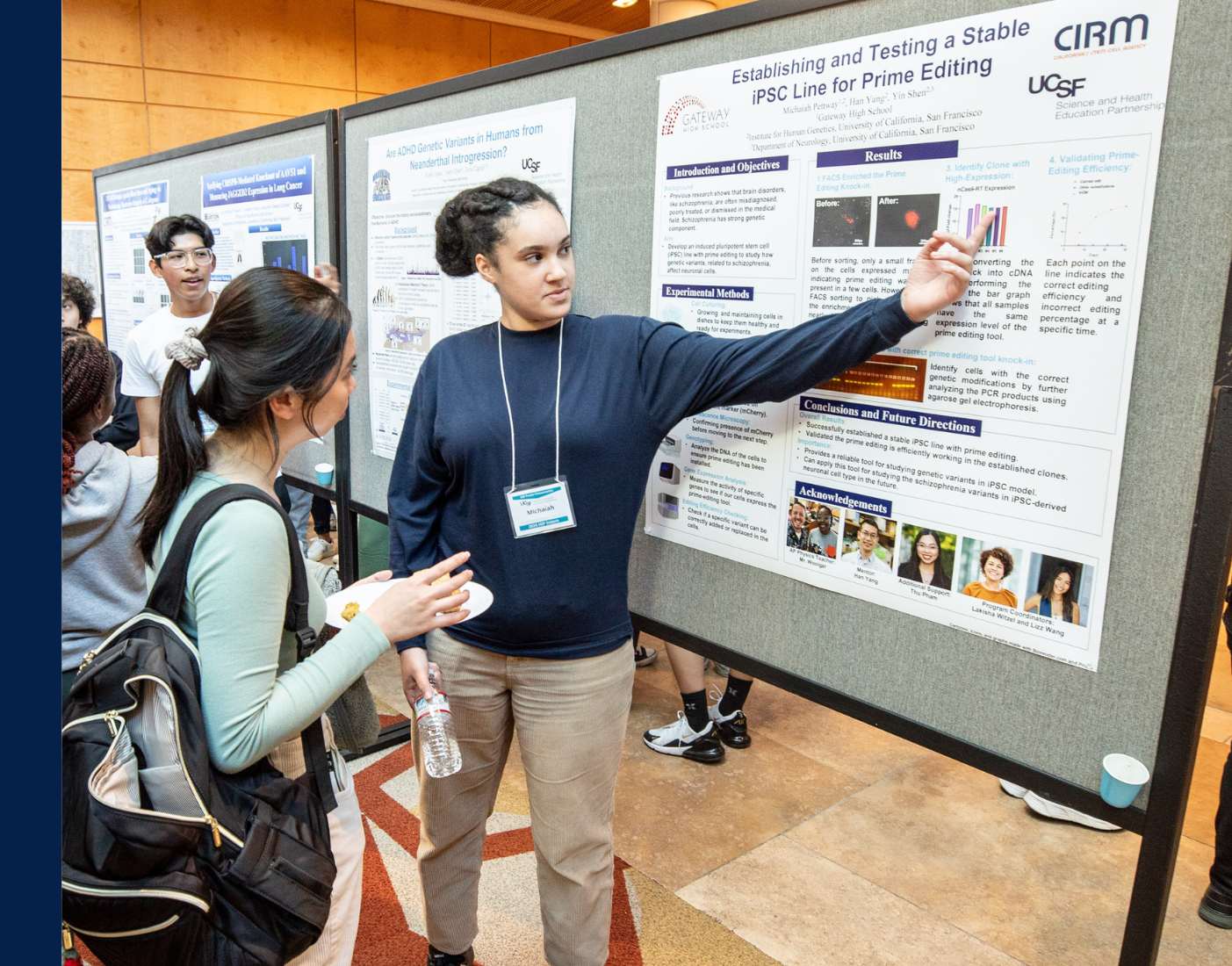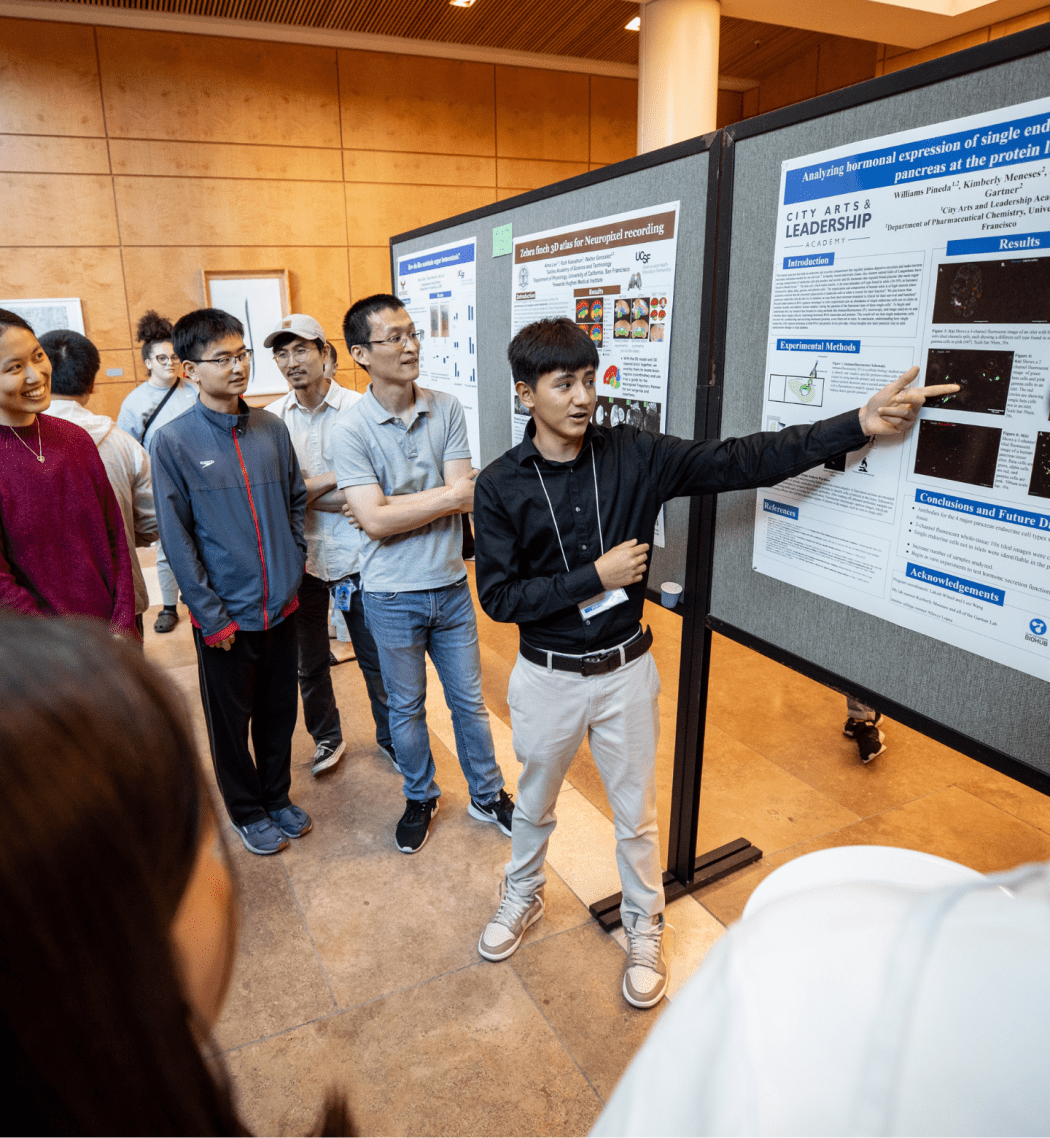Most high school students spend their summers hanging out with friends, catching up on TV and working part-time jobs.
For a diverse group of 28 young scientists who just completed the UCSF Science and Health Education Partnership (SEP) High School Intern Program, it wasn’t just a part-time job. It was a glimpse into their bright futures in life sciences.
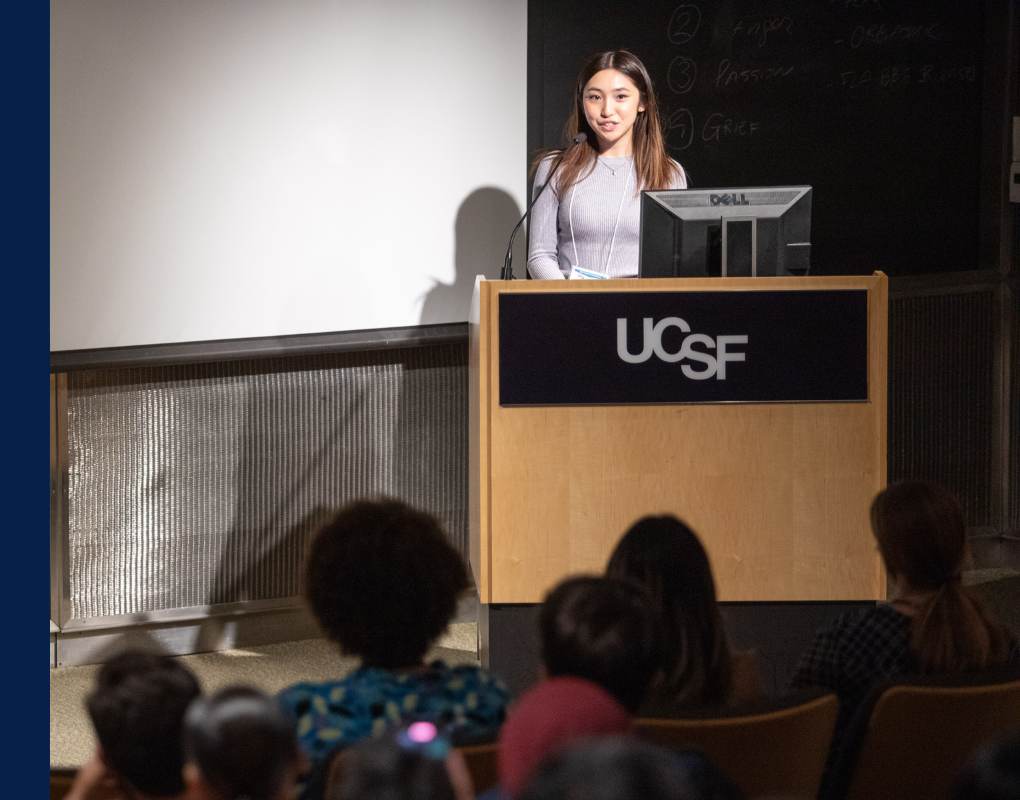
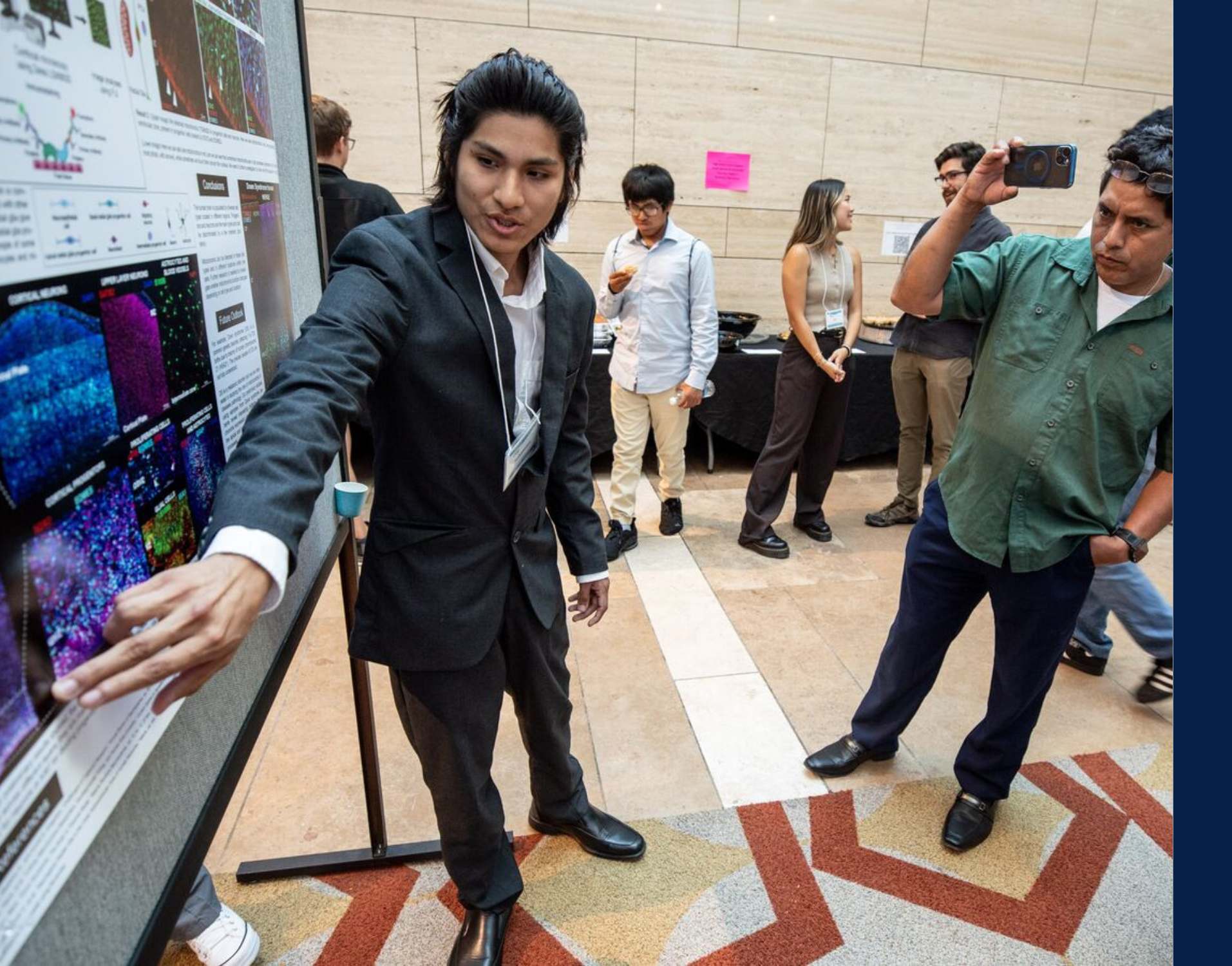
Real-world experience
The students from across the San Francisco Unified School District spent eight weeks learning how to conduct biomedical research in a variety of subjects – everything from heat stress to social circles to observing neurons in songbirds. They capped their experience this month with a poster session and celebration at UCSF Mission Bay.
“I wanted to be a part of this program because I thought that it was really interesting how we were able to be in a working environment,” said Jennifer Liu, a rising senior at Ruth Asawa San Francisco School of the Arts. “I feel like a lot of the internships that are for high schoolers are more in the classroom rather than an actual work environment. That was the first thing that compelled me to apply.”
Liu, 16, spent her program researching and comparing cell diversity in cortical samples from subjects with Down Syndrome to age-matched controls, examining brain tissues on a cellular level and seeing how cells differed across participants.
All interns were paired with scientist mentors for the course of the program.
“I love my mentees,” said Tanzila Mukhtar, PhD, postdoctoral scholar in the Kriegstein Lab at the UCSF Broad Stem Cell Center. “People should mentor as much as they can. It’s a great feeling when people come back to you with gratitude. That actually brings tears to my eyes because I’ve been able to contribute to someone’s journey.”
This is Mukhtar’s third year as a mentor. Her previous students have gone on to UC San Diego and UC Berkeley. This year, Mukhtar worked with Liu and Sebastian Baldeon, a rising senior at John O’Connell High School in San Francisco.
Baldeon, 18, studied the characterization of mitochondria in the developing human neocortex. “In my home country, there were not enough resources to provide an immersive experience,” he said. “When I got here, I saw many opportunities related to the science field. I really liked the experience here.”
In the U.S. for just a year, Baldeon is on track to graduate from high school a second time next year after first graduating in his native Peru.
“I learned new things here that I never thought I would learn,” he added.
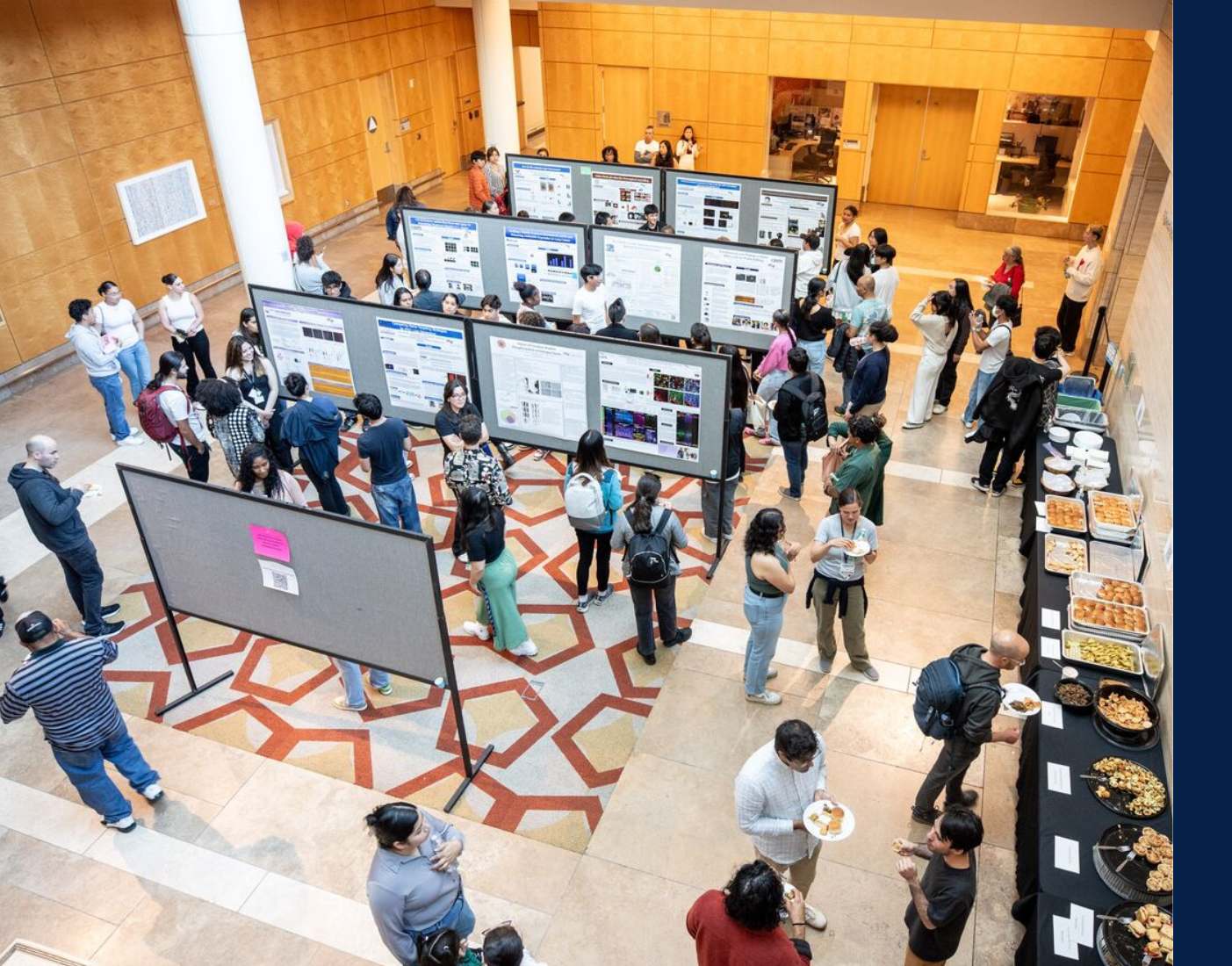
Lasting connections
Spearheaded in 1987 by prominent biochemist Bruce Alberts, SEP’s High School Intern Program supports students from backgrounds that have been historically excluded and underrepresented in the sciences.
Racial and ethnicity considerations are given to applicants, as are first-generation students. Socioeconomic conditions and family backgrounds also are considered during the interview process.
“All of the students are from San Francisco public schools,” said Lakisha Witzel, SEP academic coordinator. “That, I think, is unique and special because these are students that are very local. Many have had interactions with UCSF in some way but may not know the full extent of what UCSF does and the kind of research that happens here.”
We are really trying to support students from San Francisco public schools.”
Witzel and Lizz Wang, also a SEP academic coordinator, run the program together.
“This connection oftentimes continues beyond their high school years,” Wang said of the networking opportunity. “A good number of our students are still in communication with their mentors or even come back and work in the lab after they’re gone.”
In total, nearly 550 students have passed through the program since its inception, several of whom have come back to UCSF as learners. Many who sign up for the program opt to study diseases they have personal connections to, such as cancer, diabetes and Alzheimer’s. Amazingly, some students have even been credited as authors of the research they helped contribute to as interns once it was published.
Four past interns are studying at UCSF now and one is even serving as a mentor.
Alberts, who was awarded the National Medal of Science by President Barack Obama in 2014, was in attendance at the celebration.
‘Kind of a no-brainer’
That mentor/mentee connection is a differentiator for the long-time UCSF program.
Many of the mentors learn just as much, if not more, from their mentees.
“It’s also training for me,” said Han Yang, PhD, postdoctoral scholar in the Shen Lab, part of the UCSF Institute for Human Genetics. Yang, who hopes to be a principal investigator (PI) himself one day, said he was encouraged to sign up for the program by his PI as he works toward the possibility of having his own lab.
“I have learned a lot about how to interact with my mentees,” he added.
Yang partnered with Michaiah Pettway, a rising senior at Gateway High School in San Francisco for the eight-week sprint. Pettway, a 16-year-old who’s “always loved science,” presented her research on variants of schizophrenia.
Her love of biology, physics and chemistry led a teacher to recommend that she apply.
“You’re putting yourself out there,” Pettway said of the experience at UCSF. “For graduate school, your name is already known at UCSF, you already have that experience in the lab. A lot of stuff we do is not stuff that undergrads typically do. Being able to write that on your application, that shows you’re already experienced.”
Like Pettway, 17-year-old Julissa Lopez came away from the internship looking forward to a future in biomedical research. “I applied and got accepted, which is honestly the best gift I’ve ever gotten,” she said. “My mentors pushed me to become a much better person and advocate for myself. I learned so much through this experience.”
Before UCSF, the student at KIPP San Francisco College Preparatory had hoped to become a pediatrician. Now, because of her work with Nick Martin, PhD, she’s focused on pursuing a career in neuroscience.
“I signed up to be a mentor because I didn’t have a lot of interactions with real life scientists when I was young,” said Martin, a postdoctoral scholar in the UCSF Cardiovascular Research Institute’s Weiner Lab. “After Bill Nye, the next closest thing after that was my doctor. It wasn’t until undergrad that I really got to know that science is a real career. To be able to provide that experience for promising young scientists like Julissa was kind of a no-brainer.”
This summer, 10 interns were supported with funding from the California Institute of Regenerative Medicine, 10 were funded by the NIH National Institute of Neurological Disorders and Stroke, and an additional eight by the Baskin Family Foundation and a private donor.
